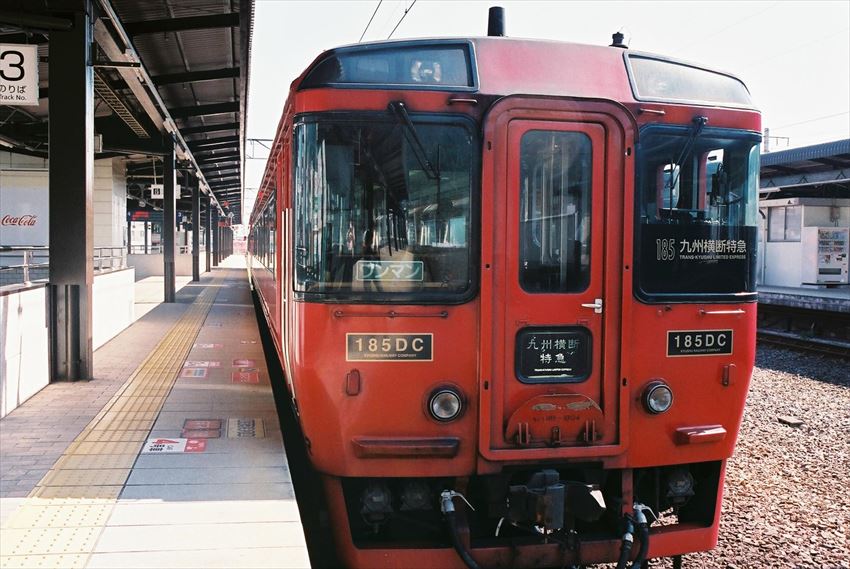
Part 5: The Kyushu Odan Tokkyu “Trans-Kyushu Express”
Welcome to the penultimate part of our series on sightseeing trains in Kyushu!After the last rides mainly in South Kyushu (in Kumamoto and Kagoshima), we began going up again, by taking two regular expresses, the Kirishima (Kagoshima–Miyazaki) and the Nichirin (Miyazaki–Oita). Although they are not sightseeing trains, the scenery is also amazing, especially for the Kirishima, which passes through the forest around Kirishima Shrine, etc.
Kyushu Odan Tokyu(Trans-Kyushu Express)
In this article, we are first going to write about the Kyushu Odan Tokkyu (Trans-Kyushu Express), before highlighting some interesting activities at both ends of the train ride.The history of the train
To begin with, this line has an interesting history. On its inception in 2004, it was actually a combination of two trains:1. Aso (a previously existing train between Kumamoto and Beppu/Oita)
2. Kumagawa (between Kumamoto and Hitoyoshi, like the SL Hitoyoshi, the Kawasemi/Yamasemi and Isaburo/Shinpei we talked about earlier!)
In other words, it spanned from Beppu/Oita at Kyushu’s north-east up to Hitoyoshi at Kyushu’s south west, hence the name “Trans-Kyushu Express”.
However, the train’s schedule and arrangement have kept changing over time.
In 2016, it “returned” to the originally “Aso” form (i.e. Kumamoto–Beppu/Oita), leaving the Kumagawa section. To add it it, due to the earthquake,
the portion between Kumamoto and Aso has been on a halt. (So, in fact, it is not a trans-Kyushu train anymore!)

The Odan Tokkyu as it enters Miyaji Station.
Train
The train is (as you can see in the green plate above), a one-man train, much like other local trains. Also, the train itself does not have the glamour of other D&S trains. For example, there was no public gallery seat, no buffet section, no special stamps (at least we did not see one).

Enjoying a cup of coffee (bought at the café inside Miyaji station) with Mount Aso in front of you.
Scenery
The modesty of the train, however, has nothing to do with the line itself. It still is a train that (nearly) cut across central Kyushu, from the sea to the mountain.
As the train departs from Beppu, you will soon find yourself feeling blissful and grateful: you will be riding alongside the cars and the sea, distinguishable from the pale morning sky only by a fine line of distant mountains. Then, the scenery evolves as the train starts running by the Ono River.
The parallel tracks of the railway
Although not clearly shown in the picture, it is a mesmerizing experience to see the parallel tracks of the railway meander amongst the forest!
The railway running along the Ono River
Whether you sit on the left or the right doesn’t matter a lot: Ono River is shifting from left to right along the railway. You have Mounts Sobo and Katamuki (in fact, it takes a brief stop at the Ogata station (緒方駅) which we mentioned when writing about hiking on those mountains before) on the south (left if you’re departing from Beppu/Oita and right if you’re returning) and the Kuju Mountain Range on the north (right/left). So feel free to take a seat on either side.
There is in fact no need for a public gallery: simple turn the seats in front of you around (seats in express trains in Japan can generally be turned 180º around) to form a semi open “small cabin”, and then you can have a full-screen view of the entire window, and also extra leg room!
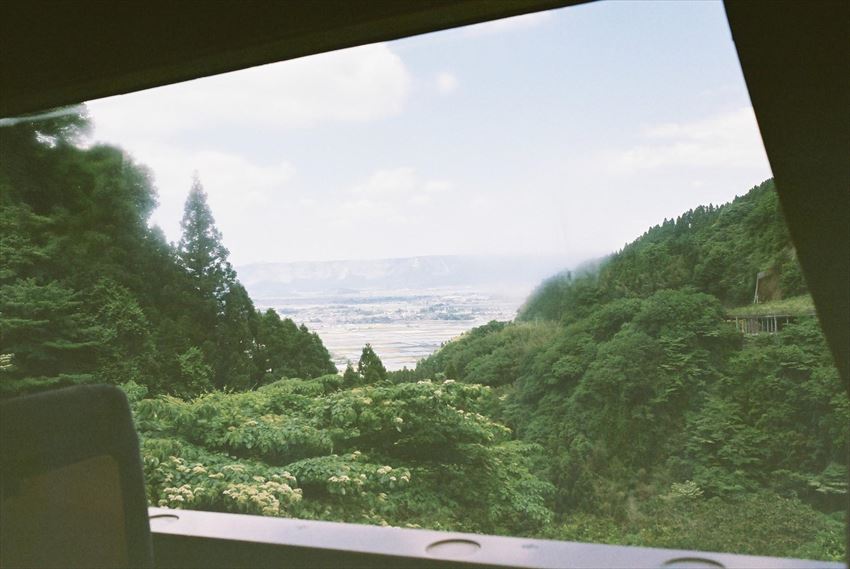
The train slows down at around 11:17 before entering the tunnel: you can enjoy bird eye’s view of the valley below.
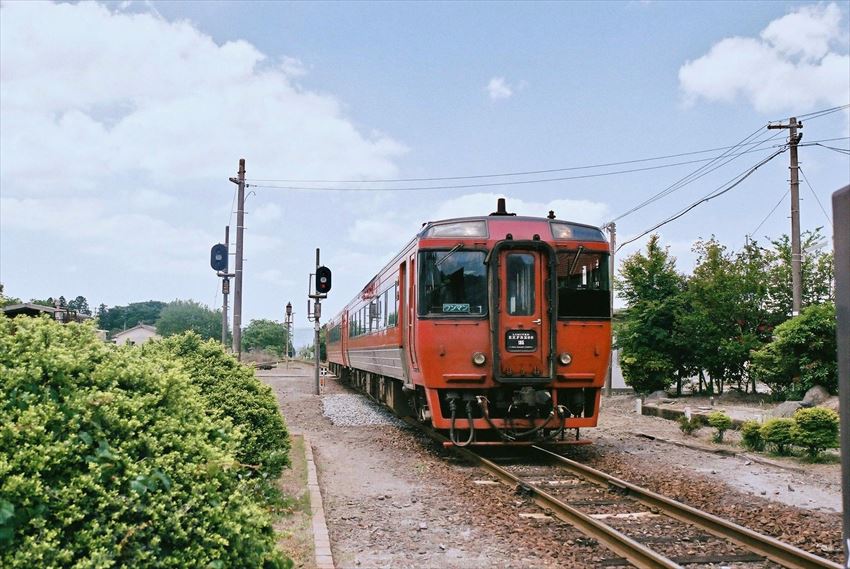
At Both Ends
Since the train ride itself may not be that “rich” compared to other sightseeing trains, we’re going to tell you more about what to do at both ends of the journey!
Beppu
Speaking of Beppu, most people may think of its famous onsens (and the red light district that surrounds it). Indeed, the onsens are not just excellent, they are remarkably cheap: just 100 yen (though you have to bring your towel, shampoo etc. if you don’t want to buy them again!)
Onsen (温泉)
As this is not an article on Beppu as such, please look up other blog for more details! Here, we are going to briefly mention two onsens:
Takegawara Onsen (竹瓦温泉)
The first one is the Takegawara Onsen (竹瓦温泉), which has such a long history (since 1879) that sometimes it is simply equated with Beppu onsen itself. There is also a sand onsen just like the last one we introduced (but not near the sea, obviously!) However, when we went (around 9 at night),
the sand bath has just closed (usually it closes at 21:30)
Kaimonji Onsen (海門寺温泉)
The second one, smaller but still quite famous, is the Kaimonji Onsen (海門寺温泉). It is a very small one –– but then, the point of bathing onsen is to drive away the stress and tiredness, especially if you have been sitting all day on trains! Alternatively, since the first Kyushu Odan Tokkyu leaves only at around 9 in Beppu, there is ample time in the morning to bath in onsen in preparation of the day’s travel.

The Takegawara Onsen at night.
Map
Itsutsu(海鮮 いづつ) : local restaurant
We went to a local restaurant (海鮮 いづつ) near the onsen to have a special kind of cuisine: the ikezukuri, which is sashimi arranged with the head and tail, served in the shape of a whole fish.


Ikezukuri of aji
We ordered the ikezukuri of aji (horse mackerel). Surprisingly, as you can see, the fish very clean. It tastes “fresh” (in the sense of not greasy) but a bit thin (not rich) compared to other fish.
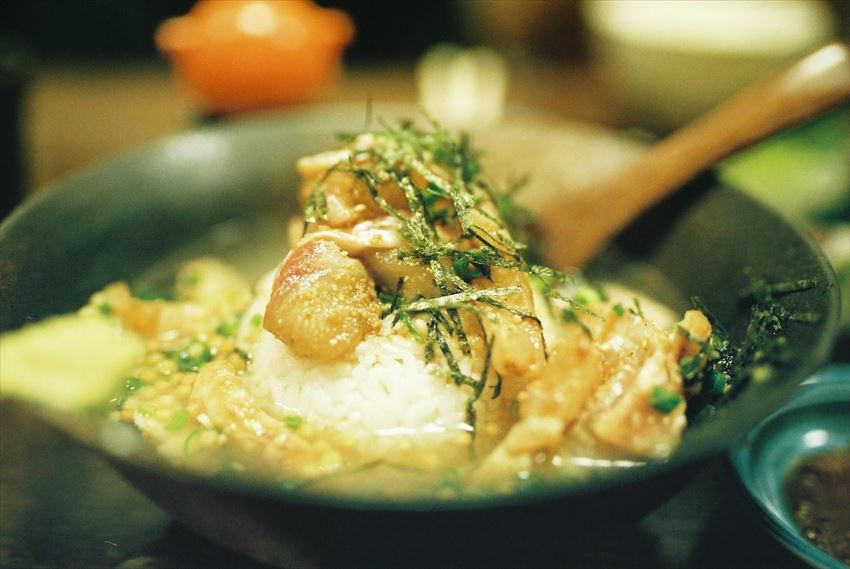
Ochazuke (お茶漬け)
We also ordered a ochazuke (お茶漬け), a bowl of rice, covered with some appetizing food such as salmon, nori, etc., immersed in green tea and eaten hot) with tai (sea bream). In comparison to the aji sashimi, we like the way the tai sashimi here got mixed with the flavor of of the ochazuke.
Particularly, it was prepared in a way such that some of the tai (those touching the water) is cooked while some (those on the rice) remained sashimi, which creates a sophisticated taste of different textures.
Map
Café KEI (喫茶KEI)
Lastly, we want to introduce a kind of hidden gem: a small, cozy café near the station (when we were waiting for the morning Kyushu Odan Tokkyu), called Café KEI (喫茶KEI). The price is reasonable (morning set for one including drinks: 550 yen) and the atmosphere is just right.
There is only one table (the rest are bar table), and although we were the first customer, some other Japanese housewives and old ladies came in to chat with the hostess and who talk to us kindly.
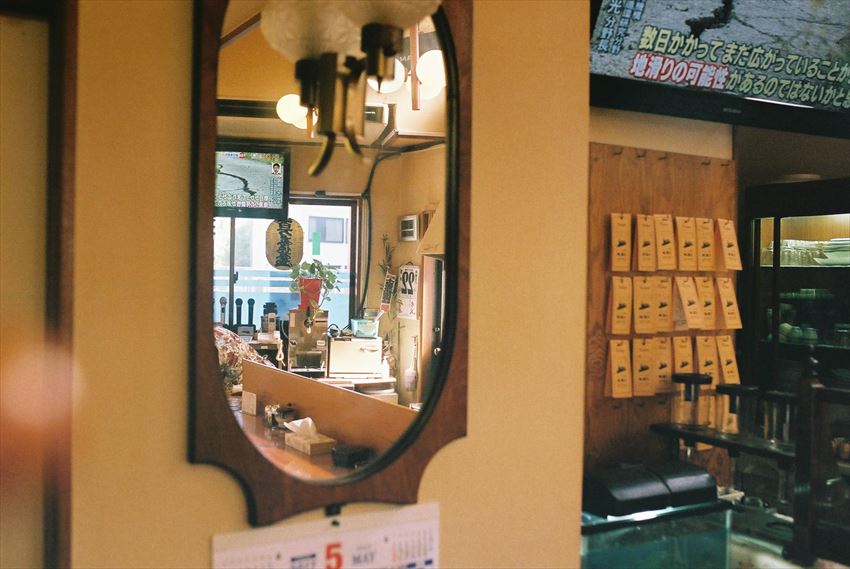
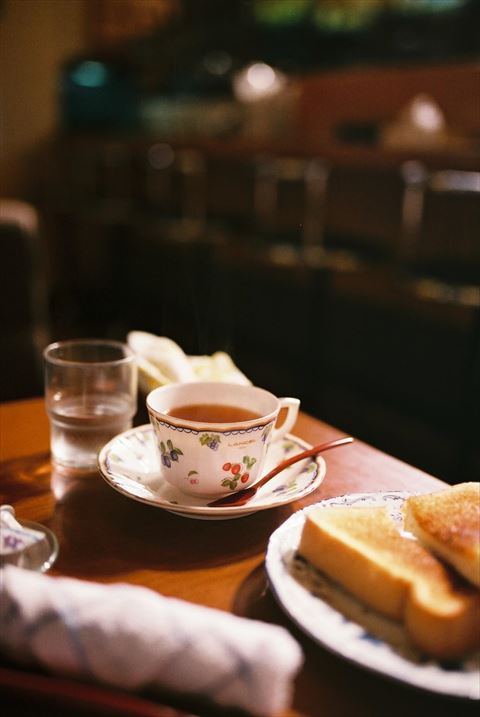
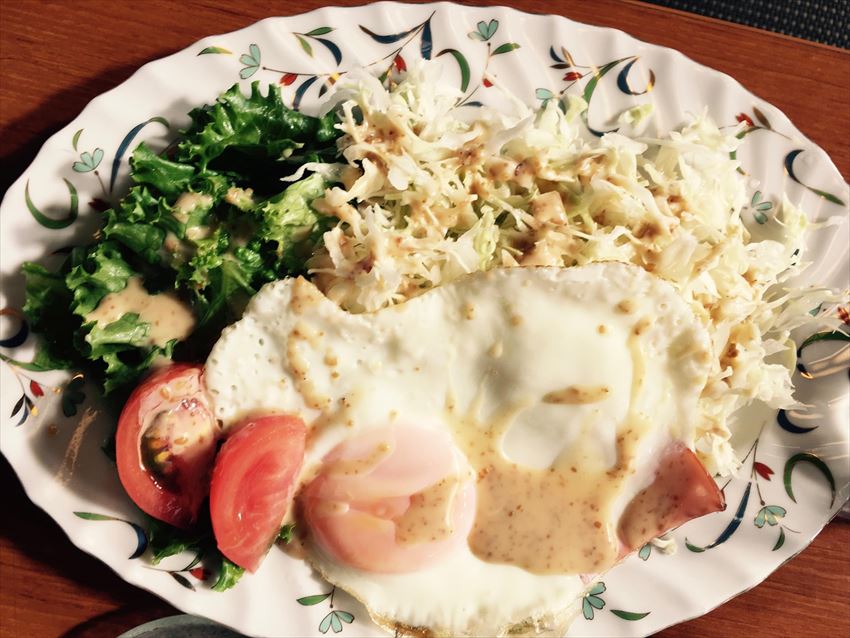
Map
Miyaji
Lastly, if you are going by Miyaji (the last station before Aso), you can go to check this bakery (called “Richmond”) near the station out! We can smell the loaf (still hot) even outside the bakery! The breads are cute, reasonably priced and above all delicious.
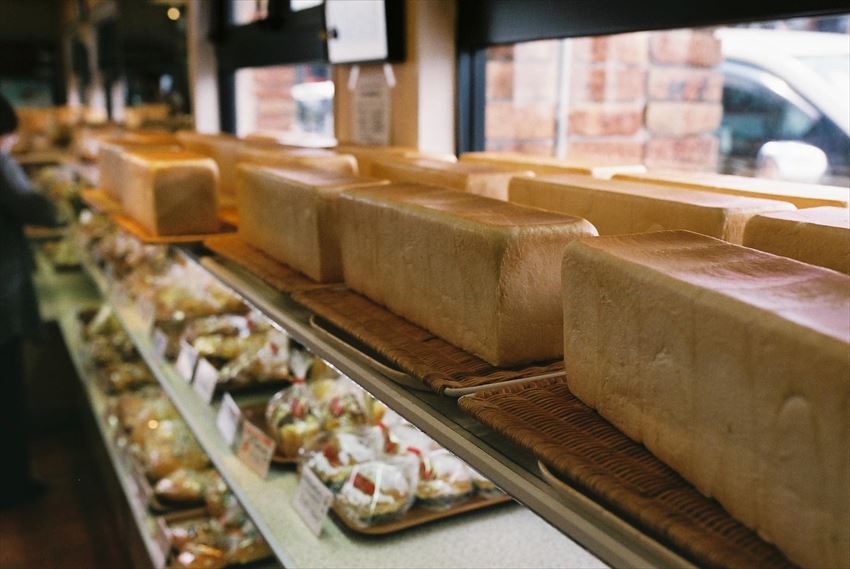
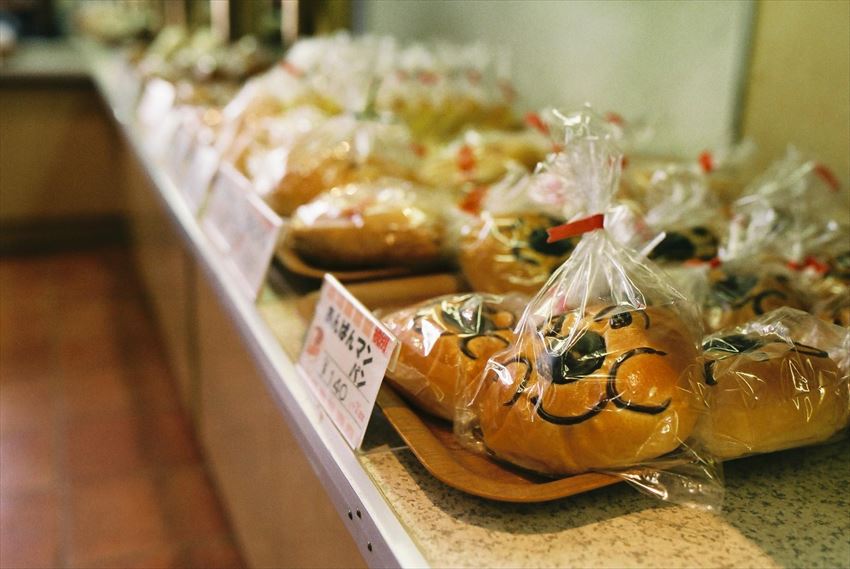
Bakery in Miyaji: “Richmond’
Map

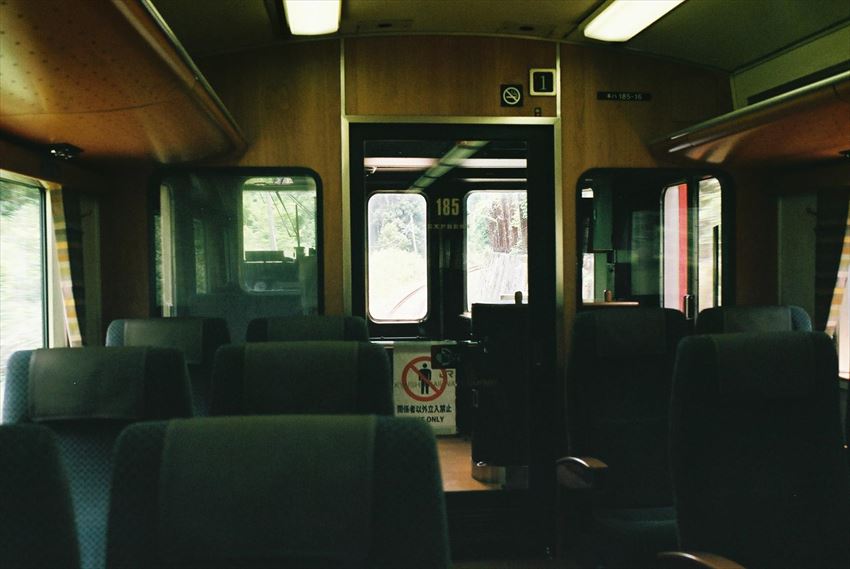
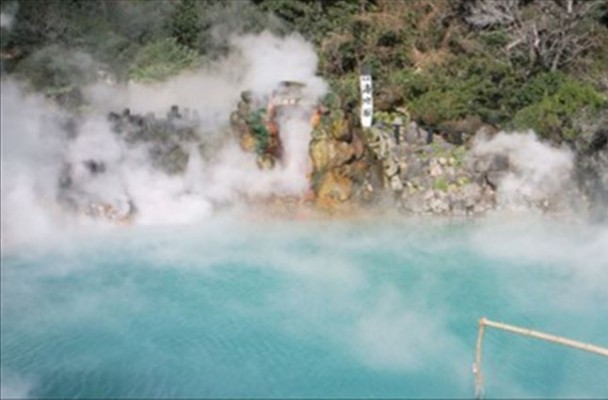

Comments